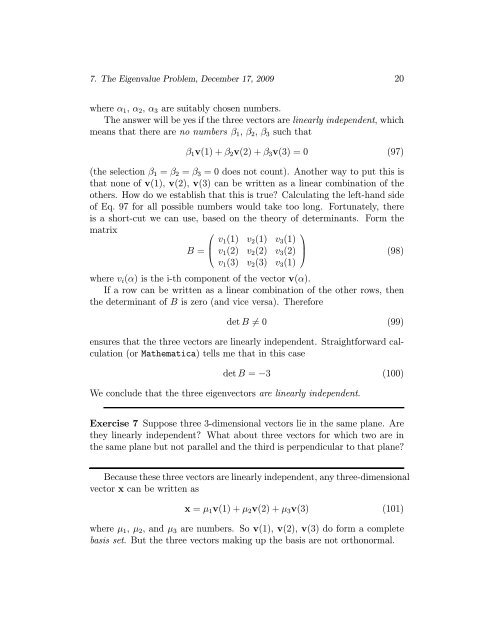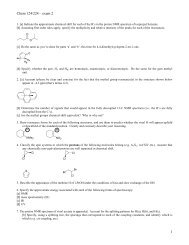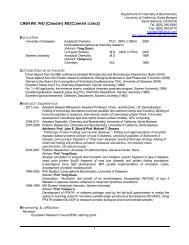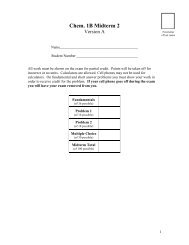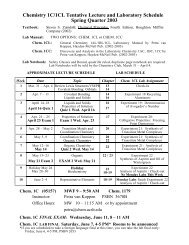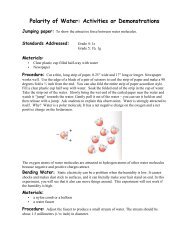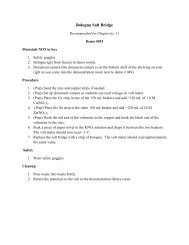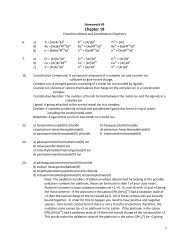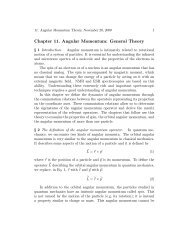Chapter 7. The Eigenvalue Problem
Chapter 7. The Eigenvalue Problem
Chapter 7. The Eigenvalue Problem
You also want an ePaper? Increase the reach of your titles
YUMPU automatically turns print PDFs into web optimized ePapers that Google loves.
<strong>7.</strong> <strong>The</strong> <strong>Eigenvalue</strong> <strong>Problem</strong>, December 17, 2009 20<br />
where α 1 , α 2 , α 3 are suitably chosen numbers.<br />
<strong>The</strong> answer will be yes if the three vectors are linearly independent, which<br />
means that there are no numbers β 1 , β 2 , β 3 such that<br />
β 1 v(1) + β 2 v(2) + β 3 v(3) = 0 (97)<br />
(the selection β 1 = β 2 = β 3 = 0 does not count). Another way to put this is<br />
that none of v(1), v(2), v(3) can be written as a linear combination of the<br />
others. How do we establish that this is true Calculating the left-hand side<br />
of Eq. 97 for all possible numbers would take too long. Fortunately, there<br />
is a short-cut we can use, based on the theory of determinants. Form the<br />
matrix<br />
⎛<br />
⎞<br />
B =<br />
⎜<br />
⎝<br />
v 1 (1) v 2 (1) v 3 (1)<br />
v 1 (2) v 2 (2) v 3 (2)<br />
v 1 (3) v 2 (3) v 3 (1)<br />
⎟<br />
⎠ (98)<br />
where v i (α) isthei-thcomponentofthevectorv(α).<br />
If a row can be written as a linear combination of the other rows, then<br />
the determinant of B is zero (and vice versa). <strong>The</strong>refore<br />
det B = 0 (99)<br />
ensures that the three vectors are linearly independent. Straightforward calculation<br />
(or Mathematica) tells me that in this case<br />
det B = −3 (100)<br />
We conclude that the three eigenvectors are linearly independent.<br />
Exercise 7 Suppose three 3-dimensional vectors lie in the same plane. Are<br />
they linearly independent What about three vectors for which two are in<br />
the same plane but not parallel and the third is perpendicular to that plane<br />
Because these three vectors are linearly independent, any three-dimensional<br />
vector x can be written as<br />
x = μ 1 v(1) + μ 2 v(2) + μ 3 v(3) (101)<br />
where μ 1 , μ 2 ,andμ 3 are numbers. So v(1), v(2), v(3) do form a complete<br />
basis set. But the three vectors making up the basis are not orthonormal.


